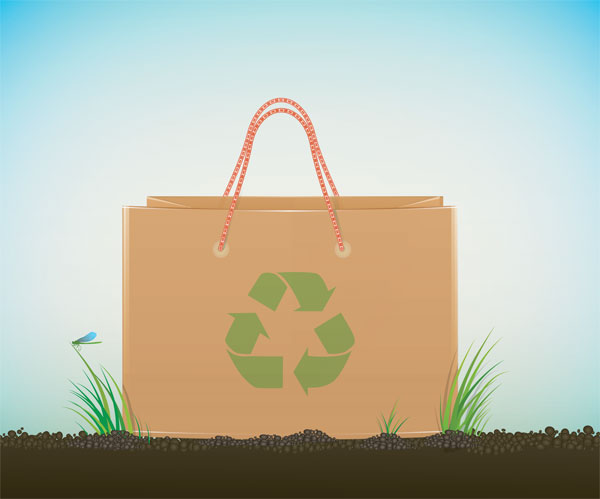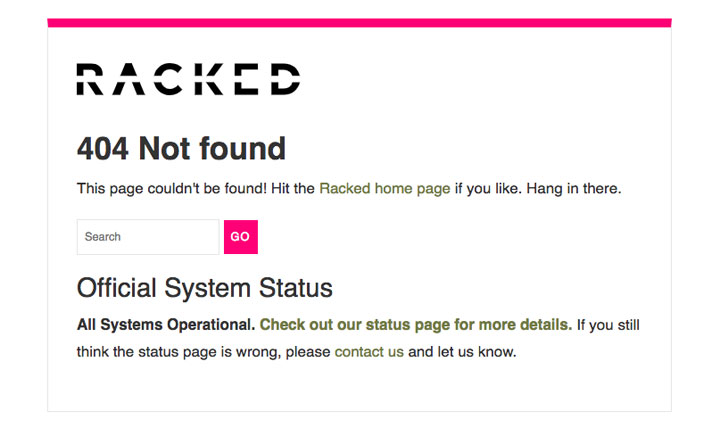 0
0 
Most of us are sample sale aficionados because we can’t afford to pay retail prices. Some of us are because we love the thrill of finding a good bargain. But the rise of ethical consumerism has introduced yet another motive to keep us on our toes (while hunting for the perfect pair of heels): sample sales and luxury consignment sites save the planet.
Ethical consumerism, ethical fashion, fair trade fashion, and sustainable fashion have all become ubiquitous in the world of fashion—but many brands also incorrectly use them interchangeably. It seems everyone from your BFF to your favorite brand is going green. I agree that “green is the new black” when it comes to fashion and shopping.
We strongly encourage you to go green but it’s impossible to do that properly if you don’t have a solid understanding of what “green” truly means. And considering that it’s becoming more and more trendy, you have to make sure you’re discerning enough to be able to separate the truly green from the, well, aqua.
We are concerned that articles like this one that proclaim things like, “The luxury resale market is expected to soar with the rise of mindful consumerism,” put too much emphasis on the “help the planet” factor and not enough on the “consignors can make a substantial buck on their used goods” factor. The article might simplify the reason why second-life merchandise thrives, but that doesn’t mean it is completely wrong. Our planet is better off with us purchasing less new merchandise.
Brands are under pressure to score large profits and be sustainable simultaneously—and some are willing to do that at whatever cost… including taking advantage of naive consumers who don’t really understand what “sustainable” means. This practice even has its own name: greenwashing. Please, don’t be that consumer who falls victim to this deceiving marketing strategy—be immune to greenwashing and brainwashing alike!
Step One
Understand the difference between ethical, fair trade, and sustainable fashion.
We couldn’t find better definitions than the ones provided in People Tree by founder and CEO Safia Minney. So yeah, click that link… or check out our twitter version (tight character limit) of these definitions:
But:
Step Two
If you’re going to buy new items, then make sure they check off as many of the above boxes as possible, or whichever boxes are most important to you. However, this can be a challenge getting this information out of brands…
So an alternative would be even further simplifying this process by buying at sample sales and consignment stores. Why? Because even if they don’t check the boxes, they’re at the very least: not new. That means you save them from being destroyed at the expense of Mother Earth. It appears that extending the life of a product instead of always conflating “new” with “better,” plus creating a culture around that idea might be a sensible thing to do… for now.
Happy green shopping!
xo
Posted by Staff Writer at 01:27 AM
A FASHION , Eco-Friendly , Fashion News , Fashion News , Fashion: Trends, Style, and Business , Insights , Our Views and Opinions , Shopping News , Shopping Trends , Sustainability , Trends |
 0
0 
We had just re-launched The Stylish City with a new, more functional design (yes… again!) when we got the alert that Racked had published their final post. Their short farewell note sent us to their newly launched The Goods by Vox for stories about what people buy and why. In all honesty, Racked stepped away from sample sales coverage a couple of years back when they hired a new editor-in-chief. She decided to focus her resources on turning the website’s spotlight on fashion news and features. You can’t blame her, but you also can’t blame me—sample sale queen—for being sad. I was suddenly worrying: was that a sign that there is no hope to have a sustainable business model in this sample sale publishing space?
While bloggers with real rent-paying-jobs or understanding husbands (guilty as charged) can afford to cover NYC sample sales, it is hardly a business model to be envied. Do you remember DailyCandy? NBC closed them down unceremoniously due to decreased traffic. Even the beloved Mizhattan and the mizterious miss (or miz?) behind it has bowed out. Why? (Reveal yourself to me regardless because I want to meet you!)
What are the factors affecting this sample sale space that make it so difficult for websites about sample sales to survive? Sample sales are thriving, after all. Here is the good news about our beloved sample sales:
And yet companies like DailyCandy, Racked, and Mizhattan have all had to call it quits despite all of this good news. The question remains: WHY? Here’s the bad news that we suspect may be contributing to the potential demise of the sites who spread the word about sample sales:
Needless to say, we understand, Racked. And let this be our farewell letter to you. You will be missed and we are sad to see you go the same way DailyCandy and Mizhattan went. The Stylish City is still here… for now. But hopefully, for much longer…
Happy shopping,
M
Posted by Mirela Gluck at 02:12 PM
Insights , Our Views and Opinions |
 0
0 Department store apocalypse is taking its toll on NYC
The shutdown is one of up to 10 Lord & Taylor closures of a total 50 stores planned by chain owner, Hudson’s Bay Company. It comes amidst a nationwide department store apocalypse. Hudson’s Bay, which owns 488 stores including Saks Fifth Avenue, is battling high debt, declining sales and falling stock prices.
Posted by Staff Writer at 08:18 AM
Fashion: Trends, Style, and Business , Insights , News: Fashion, Beauty and Retail , Retail , Shopping like a Pro , Shopping News |
 0
0 Luxury Resale’s Quiet Reckoning
NEW YORK, United States – With the luxury resale market on track to hit $6 billion globally in 2018, according to Bain, consumer appetite for used fashion goods continues to grow. But the boom that has fuelled the rise of major luxury re-commerce players like The RealReal and Vestiaire Collective will only last if the market is fed with product that people actually want to buy.
Posted by Staff Writer at 04:31 AM
Eco-Friendly , Fashion News , Fashion: Trends, Style, and Business , News: Fashion, Beauty and Retail , Retail , Shopping like a Pro , Shopping News , Shopping Trends , Style , Sustainability |
Know something we dont? Email us
at [email protected]
